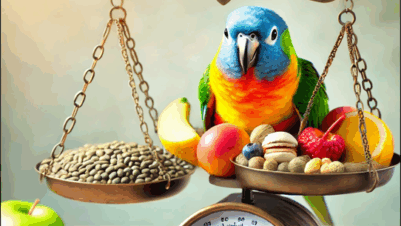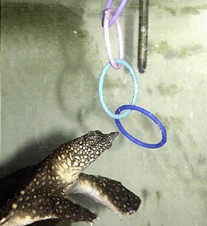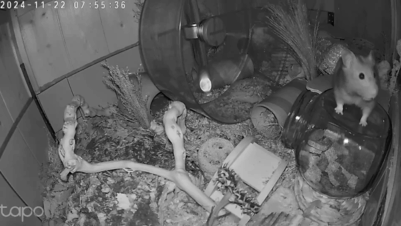Steadily growing demand for venison is fuelling a significant rise in farmed deer numbers. Market analysts have confirmed this growth in venison consumption. Kantar Worldpanel (2014) reported an increase of over 400 percent in UK venison sales and Mintel (2015) identified venison as a “star performer”, with growth expected to continue until at least 2020. Venison has become a “must-have” for supermarkets during the last decade, with one supplier to a single multiple retailer constructing a dedicated abattoir and cutting plant for farmed deer in 2018.
Because wild venison cannot always provide the consistency demanded by modern retailers, and as there are limited prospects for increasing the supply of wild deer meat, farmed venison provides the only opportunity to increase supply. A large proportion of the venison retailed in UK supermarkets is imported from New Zealand deer farms.
The New Zealand influence in British farms
Many of the techniques for farming red deer were developed in Scotland as far back as the 1970s and 80s, but few deer farms were established because subsidies favoured conventional agricultural sectors, and because the market for farmed venison was in its infancy and under-explored. These constraints did not exist in New Zealand and deer farming developed rapidly with around one million deer now on their farms and many deer units carrying over 1,000 deer. UK deer farms benefit significantly from techniques that have evolved in New Zealand.
Although venison has always been the principle driver for New Zealand deer farming, the growing antlers of deer are amputated annually for sale into the traditional oriental medicine market. This by-product provides around 15 percent of their industry sales.
The removal of growing antlers was made illegal in Britain by a Schedule 3 Amendment Order (1988) to The Veterinary Surgeons Act 1966. This prohibits “the removal (otherwise than in an emergency for the purposes of saving life or relieving pain) of any part of the antlers of a deer before the velvet of the antlers is frayed and the greater part of it has been shed”.
UK deer parks
Britain, and especially England, is unique in having a large number of traditional deer parks, often established centuries ago, which provide a highly valuable and distinct habitat. In addition, many more recent deer enclosures have been established to provide amenity value and as zoos and wildlife parks. Deer within parks have to be culled to avoid overstocking and this is done by skilled marksmen and women with the carcasses processed in the same way as wild deer, through Approved Game Handling Establishments.
Park deer are predominantly fallow (Dama dama) but frequently include red deer (Cervus elaphus) and sika (Cervus nippon) as well as occasional other species. In addition, there are now many business enterprises carrying reindeer (Rangifer tarandus), catering for the Christmas demand in town centres, etc. Reindeer have their own health problems associated with the milder climate in southern Britain, to which they do not seem to be well suited.
British deer farm management
This short article in two parts is devoted to the management and diseases of farmed deer – not those in parks. As in New Zealand, almost all British deer farms use red deer (Figure 1). This species is easier to handle than fallow or sika. The following management notes are therefore based entirely on red deer. It must be remembered that taxonomically, the relationship between different deer species is, with few exceptions, as close as, for example, that between sheep and cattle, and may be more distant. Extrapolation between deer species in relation to management, diseases or therapies is therefore extremely unwise.

Red deer have only been domesticated for a few decades. They have therefore not yet been selected to produce what might be considered pathological quantities of milk, wool or meat. Thus mastitis, ketosis, milk fever, etc are unknown in farmed deer.
They also retain their seasonality with an autumn rutting season, an average 233-day gestation length and crucially a calving in May and June to provide maximum feed value for lactating females or hinds. Wild red deer normally lactate until mid-winter and provide parental support after that but on deer farms, calves are weaned either before the rut in late August or September or after the rut in November. With good management and early weaning, calving can be advanced into early May or even April on good pasture.
Stags should be removed from the hinds in November to prevent late calves. Hinds are seasonally polyoestrous, cycling at around 20 days with oestrus lasting 12 to 24 hours commencing in early October and continuing to February if they do not become pregnant. Oestrous behaviour becomes more intense as the season progresses. Hinds can normally be expected to produce around 12 calves in their lifetime.
During the rut, multi-sire mating is generally used, with one adult stag to around 40 hinds, but single sire mating groups of up to 60 or more hinds have been used. Hinds first conceive as yearlings at around 15 months and groups of yearlings are most effectively mated by using yearling stags at a ratio of around 1:10.
Calving
Hinds benefit from some cover during the calving season to reduce the risks of mismothering, especially amongst first calvers. Even clumps of rushes or nettles will serve, but scrub or woodland is valuable and will also, of course, provide shelter during the winter. Hinds are best left in seclusion during calving. Dystocia is rare but if there are problems then this is commonly associated with hinds being over-fat.
Calving percentages of over 95 percent are normal in well-managed, established herds with lower percentages, and slightly later calving, in first calvers.
During the summer, hinds and calves should be given good grazing with a sward length of 10cm; this is normally provided by rotating the deer between paddocks. Forage crops of brassica, chicory, etc are valuable (Figure 2).

Weaning
Calves at weaning are normally ear tagged, sexed and wormed. They may then be housed or grazed on good pasture with shelter. It is advisable to feed concentrate ration to both hinds and calves for a few weeks prior to weaning to accustom the calves to hard feed. Weaning is the most stressful episode in the farmed deer calendar and calves are most vulnerable to disease at this time. Regular feeding is essential, ideally twice per day until calves are well settled after weaning.
Calves are normally slaughtered at about 15 months from late summer but there are increasing moves to feed deer well by using forage crops thus achieving the desired 60kg carcass weight much earlier; perhaps as early as seven or eight months.
Due to the prohibition on removing growing antlers and a further regulation prohibiting the transport of deer with growing antlers, young stags cannot be transported to the abattoir until the antlers are hardened when they can be legally sawn off without causing any pain. Adult stags should have their antlers removed as soon as the velvet is cleaned in late summer and before testosterone levels have risen sufficiently for them to become aggressive. Modern deer crushes, usually based on a hinged gate system but also occasionally hydraulic, are essential for antler removal.
Carefully designed yards for weaning, weighing, tagging, de-antlering and loading into trucks are vital for a deer farm and new deer farmers will need advice and to visit as many existing farms as possible before constructing their system. It is also advisable to have the paddocks linked by raceways leading into the yards. This permits different classes of stock to be drafted independently into the yards.
To make improvement more rapidly, many deer farmers are using laboratories to confirm the parentage of calves by genetics. Many deer farmers are now having their hinds scanned, usually in December, and artificial insemination has become increasingly popular where farmers wish to improve their genetics, often using semen imported from New Zealand where stags of proven breeding value are available. Embryos have also been imported and implanted. These technologies are now established and effective
FURTHER READING
The Veterinary Deer Society has published a handbook, Management and Diseases of Deer, which is now available on disc from Mark Dagleish (mark.dagleish@moredun.ac.uk).
For over 30 years, the Deer Branch of the New Zealand Veterinary Association has published annual proceedings of its deer courses. These are available online from: info@sciquest.org.nz. For more information, visit: sciquest.org.nz/deer.
For the general biology of deer, refer to: Fletcher, J. (2014) Deer. Reaktion, London.
Proceedings of papers read at many Venison Advisory Service meetings are available at: venisonadvisory.co.uk.








